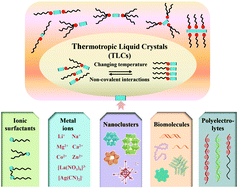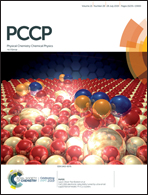Ionic-surfactants-based thermotropic liquid crystals
Abstract
Thermotropic liquid crystals (TLCs) are a series of soft materials with ordered arrangements of repeating structural units in a certain range of temperature. Specifically, the TLCs constructed by the electrostatic combination between ionic surfactants and other oppositely charged groups have received great attention in the field of optoelectronic devices, material transportation and separation, smart materials as well as biosensing. As typical amphiphilic molecules, ionic surfactants with charged head-groups and long alkyl tails exhibit unique self-assembly behaviors, being preferable as flexible building blocks of TLCs. In this review, we have discussed the TLCs formed by salt-free catanionic surfactants and ionic surfactants with other functional groups, including metal ions, nanoclusters, biomolecules, and polyelectrolytes. The design of such TLC molecules, the influencing factors of the mesophases, and the related applications of the TLCs are discussed in detail. Because of their easy preparation and variable structure, these TLCs are expected to greatly widen the application scope of the relevant functional molecules. At the end of this review, we put forward some ideas with regard to the aspects that are required to be improved and propose the possible development trend in this direction. It is expected that through this review, the important roles of ionic surfactants in building TLCs will be highlighted and thus, more studies will be inspired to exploit more TLCs based on ionic surfactants with excellent properties.

- This article is part of the themed collection: 2019 PCCP HOT Articles


 Please wait while we load your content...
Please wait while we load your content...